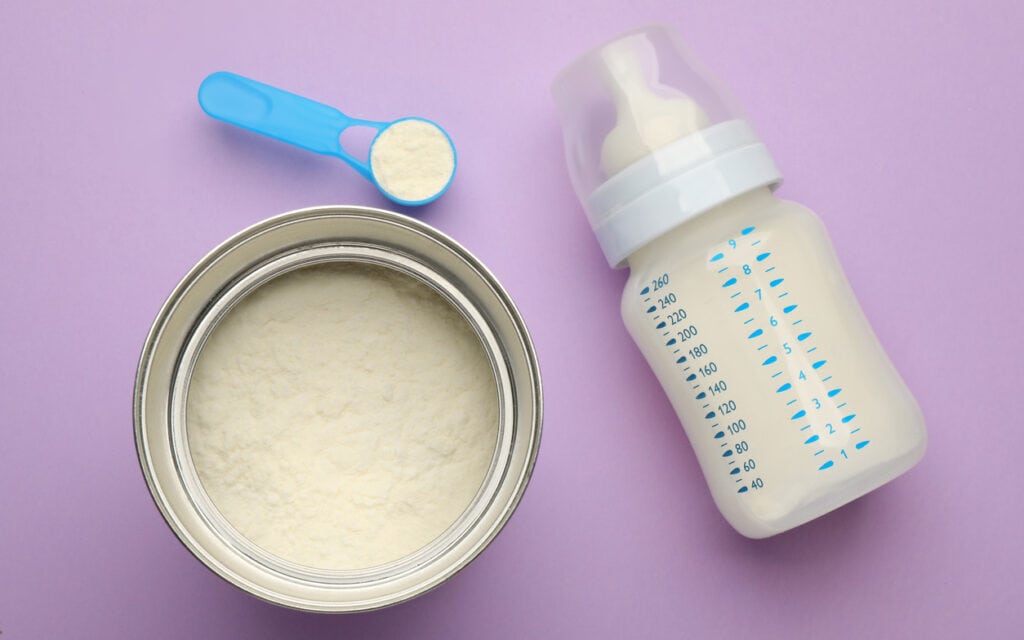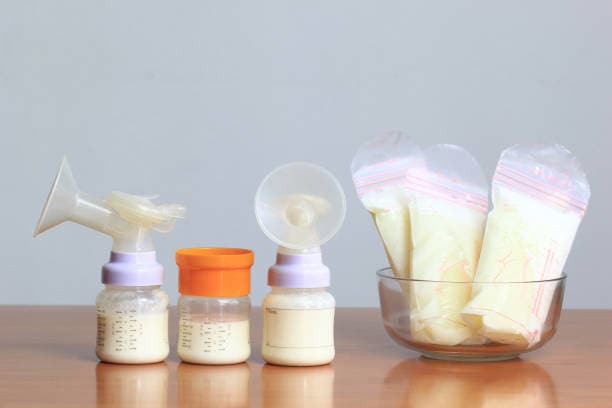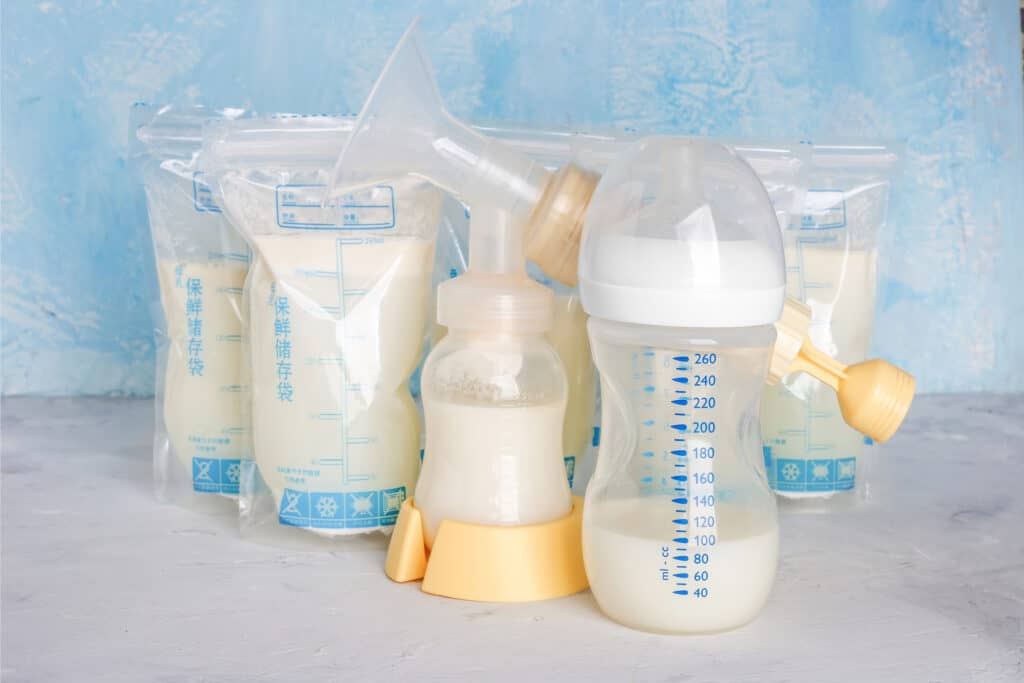When it comes to feeding a baby, it can be difficult to know exactly how much formula to give them. For parents who are using a 5 oz bottle, the question of how many scoops of formula to use can be especially confusing. The answer to this question depends on a number of factors, including the age and weight of the baby, as well as their individual nutritional needs.
Understanding how to properly prepare baby formula is essential for ensuring that your little one is getting the nutrition they need to grow and thrive. In addition to knowing how many scoops of formula to use, parents should also be aware of the basics of formula preparation, feeding amounts and measurements, and nutritional content and needs. By taking the time to learn about these topics, parents can feel confident in their ability to provide their baby with the best possible start in life.
Key Takeaways
- Properly preparing baby formula is essential for meeting a baby’s nutritional needs.
- The amount of formula needed for a 5 oz bottle will depend on a number of factors, including the baby’s age and weight.
- In addition to knowing how many scoops of formula to use, parents should also be aware of feeding amounts and measurements, as well as nutritional content and needs.
Understanding Baby Formula
Baby formula is a type of infant formula that is a substitute for breast milk. It is a mixture of different ingredients that are designed to provide the necessary nutrients to infants who are not being breastfed. Baby formula is available in different forms, including powder, liquid concentrate, and ready-to-feed.
Manufacturers of baby formula use a variety of raw materials in their products, including proteins, carbohydrates, fats, vitamins, and minerals. These raw materials are carefully selected and processed to ensure that they meet the nutritional needs of infants.
The manufacturing process of baby formula involves several steps, including mixing, heating, and sterilizing. The goal of this process is to produce a safe and nutritious product that can be easily digested by infants.
The American Academy of Pediatrics recommends that infants be fed with breast milk exclusively for the first six months of life. However, if breast milk is not available, or if the mother is unable to breastfeed, baby formula is a safe and effective alternative.
When it comes to measuring baby formula, it is important to follow the instructions provided by the manufacturer. Typically, one scoop of powder is used for every two ounces of water. So, for a 5 oz bottle, two and a half scoops of formula would be used. However, it is important to note that different brands of baby formula may have different instructions, so it is important to read the label carefully.
In conclusion, baby formula is a safe and effective alternative to breast milk for infants who are not being breastfed. It is important to follow the instructions provided by the manufacturer when measuring and preparing baby formula to ensure that infants receive the necessary nutrients for their growth and development.
Formula Preparation Basics
Preparing formula for your baby can seem daunting at first, but with a few simple steps, it can become a routine part of your day. Here are some basic guidelines to help you get started.

Measuring
It is important to measure the formula accurately to ensure that your baby is getting the right amount of nutrients. Most formula containers come with a scoop, which is designed to measure out the correct amount of powder for a specific amount of water. Be sure to use the scoop that comes with your formula, as different brands may have different scoop sizes.
Mixing
To mix the formula, first boil water and let it cool to the recommended temperature on the formula container. Then, measure out the correct amount of water and add the appropriate number of scoops of formula. It is important to mix the formula thoroughly to ensure that there are no clumps of powder.
Dilution
Never dilute the formula with extra water, as this can lead to your baby getting too little nutrition. Always follow the recipe on the formula container, which will tell you how much water and how many scoops of formula to use.
Kitchen Scale or Measuring Cup
While the scoop that comes with your formula is designed to measure out the correct amount of powder, some parents prefer to use a kitchen scale or measuring cup to ensure accuracy. If you choose to use a kitchen scale, be sure to weigh the powder and not the scoop. If you use a measuring cup, be sure to level off the powder with a knife or spatula to ensure that you are using the correct amount.
By following these basic steps, you can prepare formula for your baby with confidence and ensure that they are getting the nutrition they need.
Feeding Amounts and Measurements
When it comes to feeding a baby, it is important to ensure that the baby is getting the right amount of formula. Using the wrong amount of formula can lead to problems such as poor weight gain or dehydration. One common question that parents have is how many scoops of formula to use for a certain amount of water.
Most formula brands recommend using one scoop of formula for every 2 fluid ounces of water. Therefore, for a 5 fluid ounce bottle, parents should use 2.5 scoops of formula. It is important to note that the scoop size can vary between formula brands, so it is important to use the scoop that comes with the formula.
Parents should always measure the water first and then add the formula. This ensures that the correct amount of water is used. Using too much or too little water can affect the concentration of the formula and lead to digestive issues.
It is also important to ensure that the formula is mixed well with the water. This can be done by shaking the bottle or stirring the formula with a spoon. Any clumps of formula should be broken up to ensure that the baby is getting a consistent amount of formula in each feeding.
In addition to measuring the water and formula correctly, parents should also pay attention to the baby’s appetite and adjust the amount of formula as needed. It is normal for babies to eat different amounts at different feedings, so parents should be flexible and responsive to their baby’s needs.
Overall, by measuring the water and formula correctly and paying attention to the baby’s appetite, parents can ensure that their baby is getting the right amount of formula for each feeding.
Nutritional Content and Needs
When it comes to infant feeding, it is important to understand the nutritional content and needs of formula. Infants require a specific balance of nutrients to support their growth and development, and formula is designed to provide this balance.

Formula typically contains a combination of carbohydrates, proteins, and fats, along with vitamins and minerals. The specific content of formula can vary depending on the brand and type, but most formulas are designed to meet the nutritional needs of infants from birth to 12 months of age.
Newborns typically require a higher calorie intake than older infants, as they are growing and developing at a rapid pace. Formula for newborns may have a higher calorie content to support this growth. As infants grow and develop, their nutritional needs change. For example, at around 6 months of age, infants may start to need more iron in their diet to support their developing brains.
For premature infants or those with low-birth-weight, formula may need to be specially formulated to provide additional nutrients to support their growth and development. It is important to work closely with a healthcare provider to determine the best feeding plan for these infants.
Overall, the nutritional content and needs of formula can vary depending on the age and medical needs of the infant. It is important to follow a feeding guide and work closely with a healthcare provider to ensure that infants are receiving the appropriate balance of nutrients to support their growth and development.
Formula Storage and Safety
When it comes to formula feeding, it is important to ensure that the formula is stored and handled safely to prevent the growth of harmful bacteria. Here are some tips for safe formula storage:
Refrigeration
Formula should be refrigerated at a temperature between 32°F and 40°F (0°C and 4°C). It should be kept in the coldest part of the refrigerator, which is usually the back of the bottom shelf.
Room Temperature
Formula can be stored at room temperature for a short period of time, but it is important to use it within two hours. If the formula has been sitting out for more than two hours, it should be discarded.
Clean Bottles
It is important to clean bottles thoroughly before using them to store formula. Bottles should be washed in hot, soapy water and rinsed well. They should be sterilized by boiling them in water for five minutes or by using a sterilizing solution.
Expiration Date
Formula should not be used after the expiration date on the container. It is important to check the expiration date before using the formula.
Microwave and Bottle Warmer
Formula should not be heated in a microwave, as it can heat unevenly and create hot spots that can burn your baby’s mouth. Instead, it should be heated in a bottle warmer or by placing the bottle in a bowl of warm water.
By following these guidelines for formula storage and safety, parents can ensure that their baby’s formula is safe to consume and free from harmful bacteria.
Practical Tips for Formula Feeding
Formula feeding can be a convenient option for mothers who are unable to breastfeed or choose not to. However, it can be overwhelming for new parents to navigate the world of formula feeding. Here are some practical tips to help make the process easier and more efficient.

Feeding Schedule
Establishing a feeding schedule is important for formula-fed infants. It is recommended to feed infants every 2-3 hours, or on demand. Keeping a consistent feeding pattern can help regulate an infant’s digestion and promote healthy weight gain.
Bottle Size and Nipple Flow
Choosing the right bottle size and nipple flow is important for formula feeding. For a 5 oz feeding, a small bottle with a 4-5 oz capacity is recommended. The nipple flow should be appropriate for the infant’s age and feeding ability. Slow flow nipples are recommended for newborns, while medium and fast flow nipples are appropriate for older infants.
Formula Preparation
Infant formula powder should be prepared according to the manufacturer’s instructions. It is important to use the correct amount of formula powder and water to ensure proper nutrition and hydration. Ready-to-feed formula is also available for added convenience.
Feeding Tips
Here are some additional tips for successful formula feeding:
- Hold the baby in an upright position during feeding to prevent choking and reduce colic.
- Burp the baby after each feeding to release any trapped air in the stomach.
- Use a clean bottle and nipple for each feeding to prevent contamination.
- Warm the formula before feeding to make it more appealing to the baby.
By following these practical tips, formula feeding can be a successful and rewarding experience for both the parent and infant.
Popular Formula Brands
There are various popular formula brands available in the market that cater to the nutritional needs of infants. Some of the popular brands include Similac, Enfamil, Gerber Good Start, and Earth’s Best. These brands offer various types of formulas, including concentrated liquid and concentrated powder formulas.
Similac is a well-known brand that offers a range of infant formulas to meet different nutritional needs. Their formulas are available in both powder and liquid form, including concentrated liquid formulas. Similac also offers specialized formulas for infants with specific dietary needs, such as lactose-free and soy-based formulas.
Concentrated liquid formulas are a popular choice among parents as they are convenient and easy to use. These formulas come in small bottles that can be mixed with water to create the desired amount of formula. This type of formula is also available from other popular brands such as Enfamil and Gerber Good Start.
When choosing a formula brand, it is important to consider the nutritional needs of the infant and consult with a healthcare professional. It is also important to follow the manufacturer’s instructions for preparing and storing the formula to ensure the safety and well-being of the infant.
In conclusion, there are various popular formula brands available in the market that offer concentrated liquid and concentrated powder formulas. Parents should carefully choose a formula brand that meets their infant’s nutritional needs and follow the manufacturer’s instructions for preparing and storing the formula.
Also, read: Is A Bottle Warmer Necessary
Frequently Asked Questions
How much formula do I put in a 2 oz bottle?
For a 2 oz bottle, it is recommended to use 1 scoop of formula.
How many scoops of formula for a 3 oz bottle?
For a 3 oz bottle, it is recommended to use 1.5 scoops of formula.
How many scoops of formula for a 4 oz bottle?
For a 4 oz bottle, it is recommended to use 2 scoops of formula.
How many scoops of formula for a 5 oz bottle?
For a 5 oz bottle, it is recommended to use 2.5 scoops of formula.
How many scoops of formula for a 6 oz bottle?
For a 6 oz bottle, it is recommended to use 3 scoops of formula.
How many scoops of formula for 150ml?
For 150ml, it is recommended to use 5 scoops of formula.
It is important to note that these are general guidelines and may vary depending on the specific brand of formula being used. Always follow the instructions on the formula packaging and consult with a healthcare professional if you have any concerns or questions.

Iesha is a loving mother of 2 beautiful children. She’s an active parent who enjoys indoor and outdoor adventures with her family. Her mission is to share practical and realistic parenting advice to help the parenting community becoming stronger.
